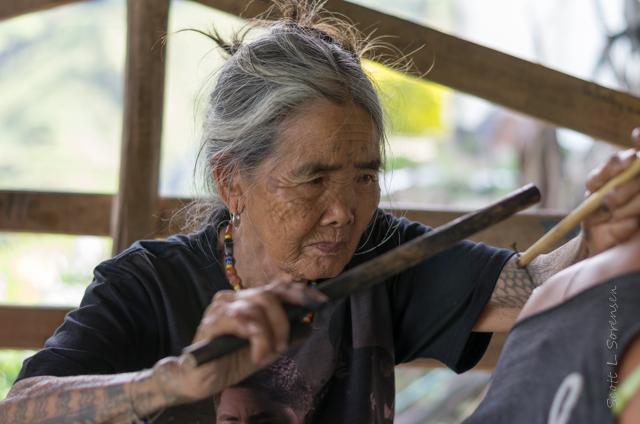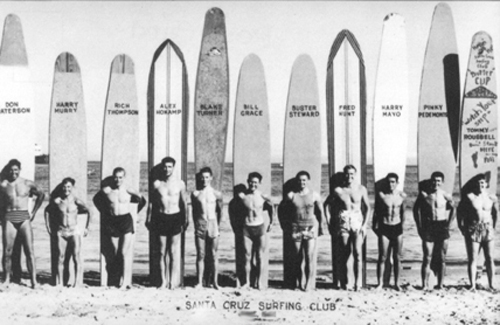The art of tattooing is a unique form of art that can be linked back to about 12,000 years ago, but in some cultures today can be seen as an unfavorable thing to have. Tattooing can be seen as a global art form that has been used in many ancient civilizations to memorialize a certain time, person, or ideas, and to be able to show them off. This painful ritual made people proud that they were having an artwork poked into their bodies to be part of a society. During the ancient times, getting a tattoo meant the coming of age, being part of an organization, or signifying the receivement of a noble status. The illustrations of the tattoos were usually something notably seen around them, the environment specifically, and these artists used tools and ink that came from their surroundings, which made the whole process even more spiritually significant. An Egyptian mummy exhibited at a British Museum shows images of Barbary sheep and a bull to represent an Egyptian hunter. In the Samoan culture, both women and men would usually have tattoos covering them from their waist to the knees. They had symmetrical patterns engraved on them that depicted the combined strength of their tribe. Since the undertaking of getting a tattoo was excruciating and extremely time consuming, it was seen as a right of passage to the Samoans. Tribesmen who did not have tattoos on their bodies were called ‘naked,’ and others who tried to go through the process of getting a tattoo but did not finish the trial were seen as shameful. Tattooing for the Samoans and related Polynesian cultures were undistributed for many centuries, until the arrival of colonizers in 1769 to these islands, banning these indigenous people from creating their artworks. This eventually took away their identities and ripped apart a section of their culture.
After a certain period of time, tattoos were not commonly seen anymore, certain groups of people began to occupy it. The groups who embraced the art of tattooing were more often seen in criminals and outcasts. In different parts of the world, some people were forced to get tattoos to express that they committed an act of crime or to show that that person was a runaway slave. This form of art was used to mark up people during the slave trade to be able to recognize if someone were to try to escape. This way of using the art of tattoo changed significantly from its original importance and is still seen today as terrible reminders for ex-captives of Auschwitz to sex trafficers imprinting names on their victim’s body. When tattoos began to appear in magazines is when it became more accepted, seeing that famous people had one of their own. Then when Instagram came out, one could say it would be a significant change for the history of tattooing. More and more people posted about their different tattoos and their importance, forcing tattoo artists to try and refine their artwork and styles, making having a tattoo a more acceptable art to have on one’s body. Now, one can see them on people who have such a large following like celebrities and even elected officials.
Although most Western Nations have socially accepted tattoos and do not associate it with dangerous people, some cultures in the Eastern Nations still have different views of tattoos. In Japan, particularly, having a tattoo has for the longest time been labeled for having connections to gangs like the Yakuza, who take their oath of devotion to the gang with full-body markings. Even though some people look at tattoos as an art form, the Japanese government can disagree. Anyone seen with a tattoo no matter the size is usually not allowed to have access to public locations, such as pools, hot springs, beaches, and gyms. In 2017, Osaka court passed a law that only allowed medical doctors to legally operate tattoos. This meant that tattoo artists and those who use the art of tattooing as their work are committing crimes. It was not until recently that the Supreme Court of Japan made it legal for tattoo artists to tattoo other people. They stated that tattooing is a different form of artistic skills that takes on a different aspect from those with a medical license. The history of tattoos goes so far back with the varying viewpoints and symbolisms that it took throughout different time periods. It is interesting how the art of tattooing was seen to many as a unique form of art that signified importance, while to others, it displayed the crimes of the person or their relation to being part of dangerous gangs.
https://hypebeast.com/2020/9/supreme-court-of-japan-tattooing-now-legal-news
https://www.cnn.com/2017/10/18/asia/tattoos-japan/index.html










Growing up in an Asian household, it has been ingrained in me that tattoos mean bad and that I should avoid those who have them. As a result, I have become perceptive and observant to those with tattoos. However, I am in the motion of dispelling my illusion of correlating tattoos, crimes, and criminals together and become more accepting to them. It is interesting to see how tattoos first formulated with its meaning and how it has driven down a downward spiral of criminality only to finally become more socially accepted now. I hope that the stigma behind tattoos completely fades as we become a more socially accepting world and the newer generation lets go of the correlations.